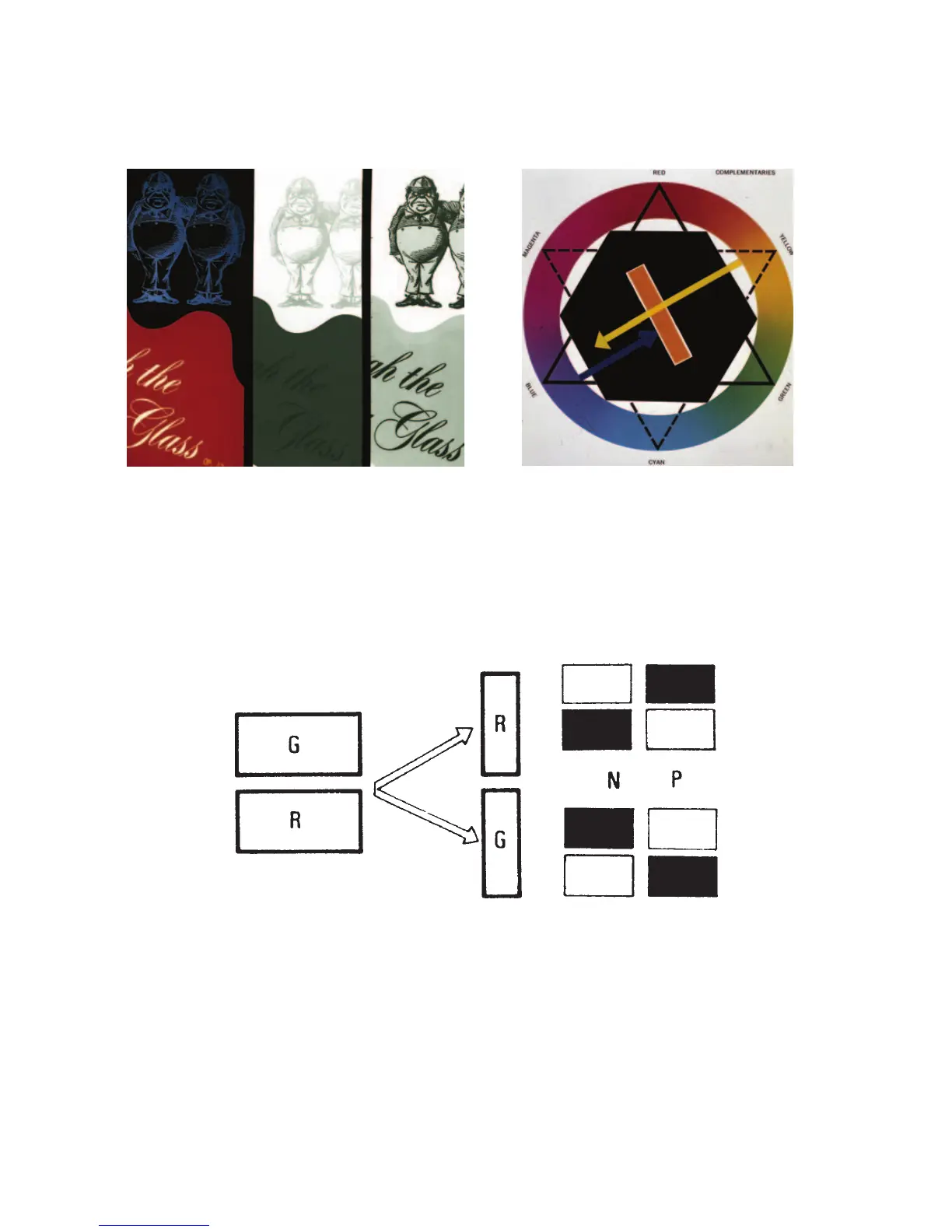320 THE HASSELBLAD MANUAL
sky without adding the blue tone to the rest of the image. This is done with graduated fi lters,
a neutral density type for darkening the sky. Such fi lters are usually in square shapes so that
they can be moved in front of the lens in a special fi lter holder, or just be placed by hand to
the proper position in front of the lens.
Figure 17-1 Filters in black and white fi lm
photography. Illustration shows how gray
tones can be changed drastically in black and
white photography. With a blue fi lter (center)
the reds are recorded much darker and the
blues much lighter. The reverse is true with a
red fi lter (right).
Figure 17-2 Filters in black and white
photography. (1) The color wheel with
the colors red (R), yellow (Y), green (G),
cyan (C), blue (B), and magenta (M) is a
convenient tool for determining how various
colors are reproduced in black and white
through different fi lters. A yellow fi lter (Y)
transmits yellow and absorbs blue. (Photo by
Ernst Wildi.)
Figure 17-3 Filters for changing gray tones. Photographed through a red fi lter (R), green (G) is
recorded lighter on the negative (N) and darker on the print (P) or on the digital sensor, red
is reproduced darker on the negative, lighter on the print or digital sensor. The situation is
reversed when a green fi lter (G) is used.

